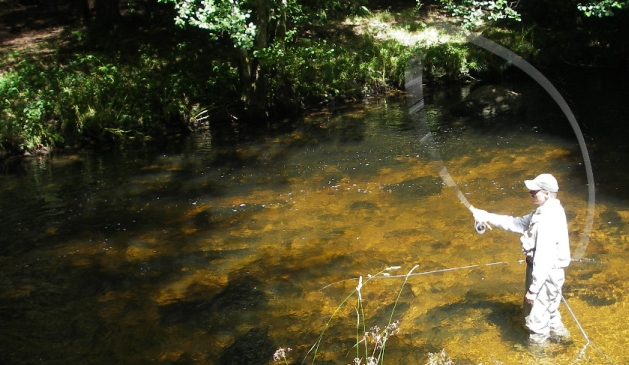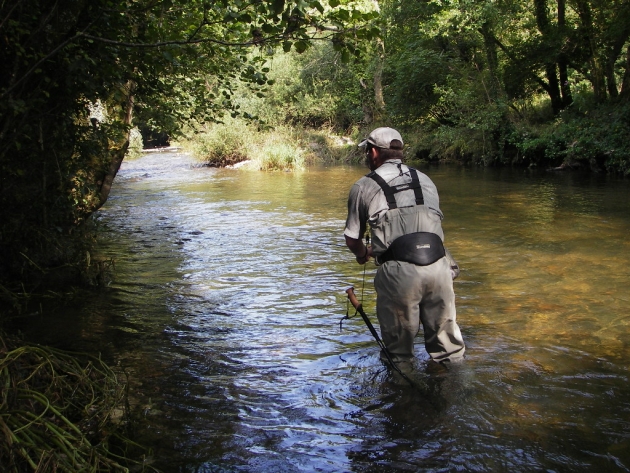Preparation: Setting up rod & line

These notes summarize the main points covered in casting lessons delivered by Fly Fishing Devon. The page outlines the purpose, strengths and weaknesses of several casts. The signs and symptoms that help to diagnose casting problems are outlined. Ways to overcome these problems are suggested.
It will help your casting if you practise between lessons. These notes contain a number of suggestions on what to do if you experience a problem when practising a particular cast. You can also use them to help you plan further lessons with Fly Fishing Devon. Always wear eye protection and a hat when casting a fly rod. These notes are not a substitute for qualified instruction. It's been said many times that you cannot learn to cast a fly rod effectively by reading about it. Fly casting involves developing a 'feel' for correct rod loading. By watching your rod, line and arm movements an instructor can help you develop your appreciation of the sensations associated with good and bad casts.
Please do not feel intimidated by the long list of things that can go wrong with a cast. Bear in mind that one of the reasons for coming to see us is so that we can help you cast effectively. Instructors carry all this information around in their heads so that they can help you concentrate on developing an effective cast. Think of us as "casting doctors". We have been trained to help you. You don't need a medical degree to know where it hurts. But you do need a doctor to recognise the symptoms and suggest a cure.
Fly fishing is fun and it is important to keep a sense of proportion. At the end of the session, your instructor will highlight particular things that you should concentrate on to improve your casting. Do not worry if some of the terms, symptoms or cures on this page are a mystery to you. These notes are designed to cover a wide range of casting needs and problems. People vary in their casting strengths and weaknesses. You will recognise the points that we emphasised during your lesson. These are the ones you should concentrate on.
You can also use this list to decide on which cast or problem you would like to focus on in your next session with us.



Do not hold the rod handle too tightly. Imagine that you are holding a little bird in your hand. Relax your grip and let the rod nestle in your hand supported by friction. Only squeeze the cork during the 'power snap'. Try out various grips to find one that is comfortable and suits your casting 'style':

When standing in a river, your stance may be restricted by rocks etc.
Find a comfortable stance:

Line can be shot into a roll cast by releasing line during the 'wrist snap' element of the forward cast.
There are a number of ways to increase the distance achieved by roll casting.
They involve techniques that allow more line to be shot into the forward cast by:

Try the following:
Don't try to learn to double-haul until you can perform the basic overhead cast.
The next videos show roll and overhead casting after instruction. Double-hauling is demonstrated by our colleague Neil Keep. Neil joined the West of England Tournament Casting Club at the age of 15 where he was coached by one of the worlds top casters, Simon Gawesworth, and went on to take part in various competitions across the country and in Europe.
This video opens with a client putting a roll cast to good use coping with a relatively narrow river with surrounding bankside vegetation. The next section features a client learning to double haul on a wide stretch of the West Dart.
In this video double-hauling is demonstrated by our colleague Neil Keep. Neil joined the West of England Tournament Casting Club at the age of 15 where he was coached by one of the worlds top casters, Simon Gawesworth, and went on to take part in various competitions across the country and in Europe.